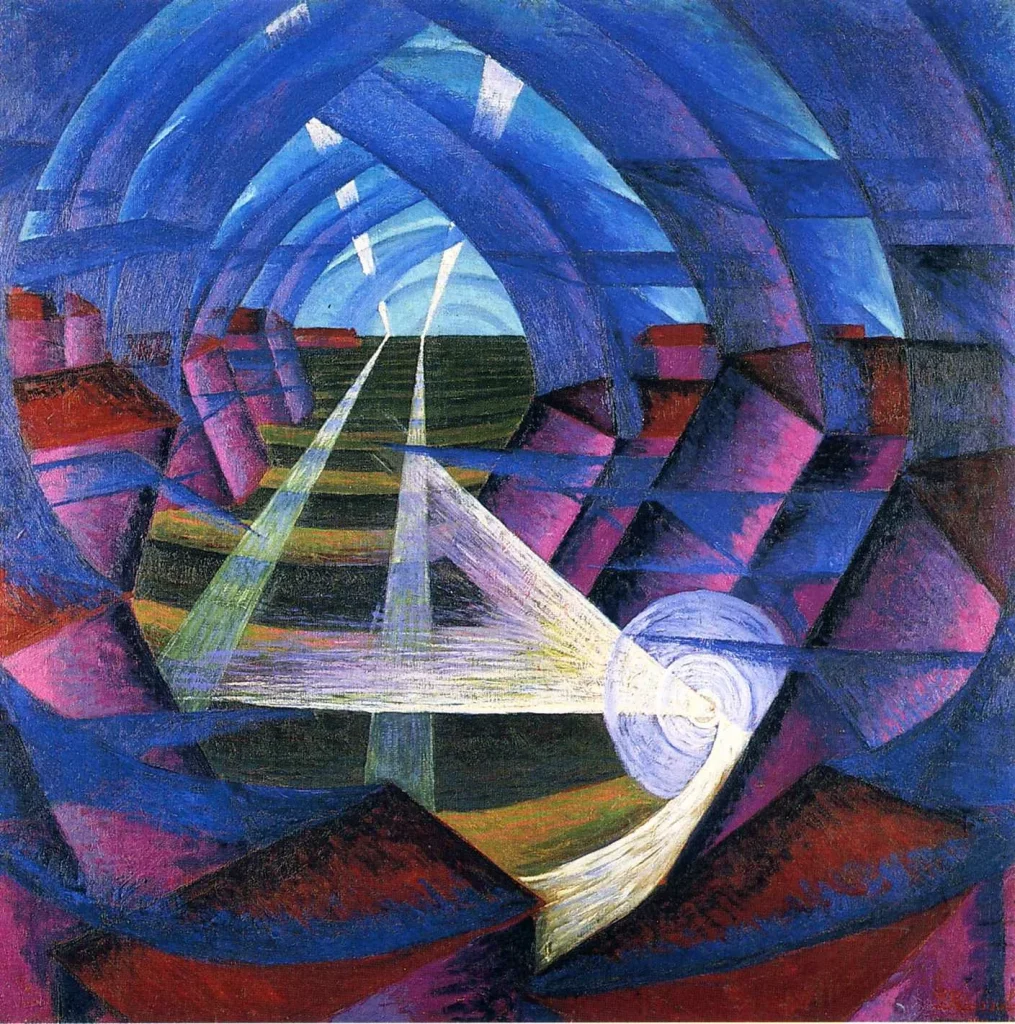
Luigi Russolo’s contributions to art and music extend beyond his well-known manifesto, L’arte dei rumori (The art of noises). While he has been celebrated for his theoretical and practical advancements in noise music, his role as a painter and his impact on futurist art are equally significant. As one of the signatories of the futurist painting manifesto (1910), Russolo was deeply involved in the early development of futurism, an artistic and social movement that celebrated modernity, technology, and the dynamism of contemporary life. His painting Treno in velocità (Speeding train), a pivotal work that reflects the futurist fascination with speed and technological progress, exemplifies this enthusiasm for capturing movement and modern machinery.

In his paintings from this period, Russolo explored the themes of motion, not just through the depiction of machines like trains and automobiles, but also by capturing the energy of crowds of protesters and other dynamic urban scenes. This exploration extended well beyond visual art into the realm of sound, culminating in his manifesto on noise, where he argued for a broader appreciation of the everyday sounds of industrial and urban life.


Russolo’s invention of the intonarumori (noise instruments) was a direct extension of his artistic principles. These instruments were designed to produce a variety of noises, challenging conventional notions of musicality and embracing the sounds of the modern world. His compositions for these instruments anticipated future developments in experimental music and had a lasting influence on composers like George Antheil, Edgard Varèse, and John Cage. Russolo’s work represented an innovative fusion of visual art and sound, reflecting the futurist ideals of embracing the new and the dynamic. His influence extended into music and remains a testament to his innovative spirit in both the visual and auditory domains.
This according to “Pasajes sonoros [y ruidistas] de la ciudad futurista” by Juan Agustín Mancebo Roca (Ausart aldizkaria: Arte ikerkuntzarako aldizkaria/Journal for research in art/Revista para la investigación en arte 9/1 [2021] 127–142; RILM Abstracts of Music Literature, 2021-16831). Also find the entry on Luigi Russolo in A dictionary of the avant-gardes (2001). Find it in RILM Music Encyclopedias.
The image at the beginning of this post is Russolo’s Dinamismo di un’ automobile (Dynamism of a car, 1913).
Below, the musician Mike Patton and Luciano Chessa test out reconstructed futurist noise machines based on intonarumori for an exhibit.


